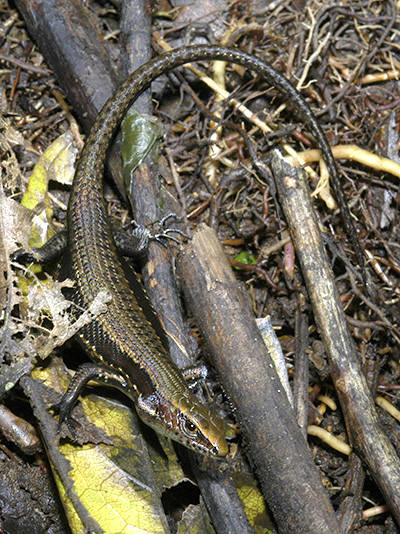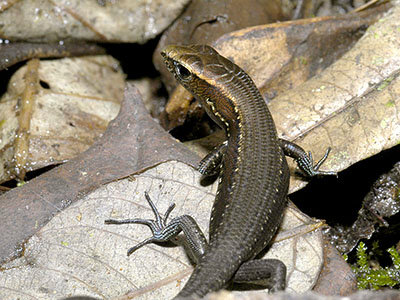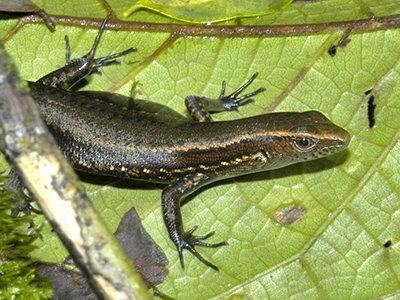
Fig 1

Fig 2

Fig 3
|
Family : SCINCIDAE
Species : Emoia sp. ?
Size (snout to vent) : These specimens maximum 5.0 cm
Size (total length) : These specimens maximum 12.5 cm The
three skinks shown here
were found within a one kilometre radius of each other, and are believed to
be the same Emoia species.
This population of skinks occurs at 1100 metres elevation, in lower montane
forests in the Kutubu area of Southern Highlands Province of PNG.
The skink is tentatively identified as Emoia sp. based on having five
fingers on the front feet, and the presence of supranasal scales.
The largest snout-vent length (SVL) for these specimens was approximately 5
cm, and the tail length appears to be at least 1.5 times SVL. The body is
robust, and the scales appear strongly keeled.
The skink has a dark copper-brown head, medium brown dorsum and darker
flanks. On each side of the body there are two narrow, broken pale bands.
The first band separates the dorsum from the flanks : it starts from the
shoulder and extends to the start of the tail. The other band starts at the
ear and extends along the lower flank to the start of the hind leg.
The species is commonly seen sunning itself at the forest edge, with its
body markedly flattened to absorb more heat.
A possible juvenile of the same species is presented on the following page
as (?) Emoia species 2.
Figs 1 to 3 : Three specimens which appear to belong to the same species,
from Southern Higlands Province, PNG at 1100 metres elevation.
|